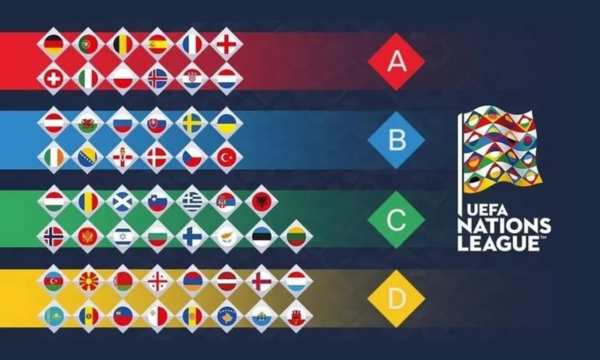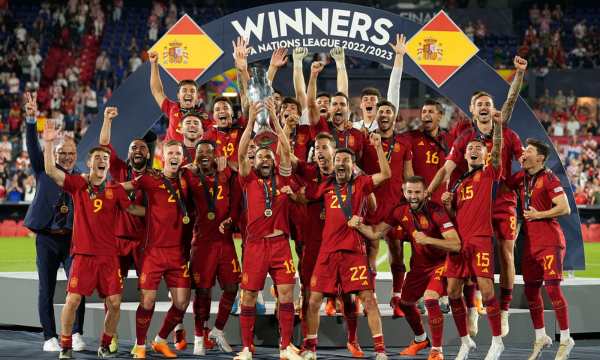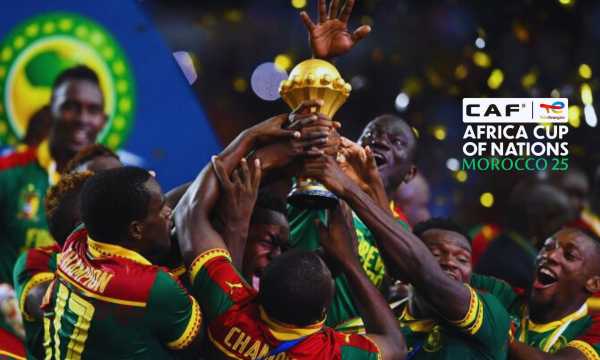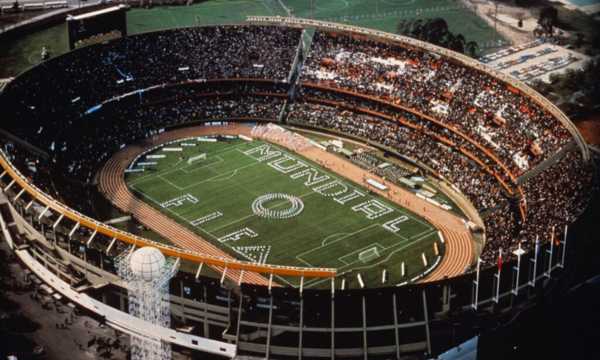Understand the Nations League: Format, Leagues, and Final Stage
The Nations League transformed the national teams’ calendar with electrifying games between major national teams.
Ad
When you thought that only World Cups and continental tournaments mattered, UEFA created a competition that revolutionized national team football.
Nations League games now bring intense rivalries, dramatic relegations, and the chance to win an official title.
Do you already understand how this innovative format works, mixing groups, leagues, and an exciting final stage?
In today’s article, you will discover everything about the competition that is here to stay in the world football calendar.
The Origin and Purpose of the Nations League
The Nations League was born in 2018 as UEFA’s response to the growing disinterest in international friendlies.
Matches without concrete purpose were losing audience and relevance in the football scene. With increasingly empty stadiums, a radical change in the structure of FIFA dates was necessary.
The new competition emerged to offer more balanced games with clear objectives.
The main purpose of the Nations League is to ensure that teams of similar levels face each other regularly.
This provides more competitive and interesting games for fans and players. Additionally, the competition offers an alternative route to major tournaments such as the European Championship.
Teams that fail to qualify through traditional qualifiers have a second chance through their performance in this competition.
Its innovative format revolutionized the international calendar, making almost every match significantly important for the participating teams.
How Leagues A, B, C, and D Work
In UEFA’s Nations League, teams are divided into four leagues (A, B, C, and D) based on their ranking.
- League A gathers the powerhouses of European football such as France, Spain, and England.
- League B includes intermediate strength teams such as Ukraine and Sweden.
- Leagues C and D, we find teams of lesser continental expression.
Each league has its own group format but follows common principles. Teams are drawn into groups of three or four within their league.
Teams face opponents from the same group in home-and-away matches. The scoring follows the football standard: three points for a win, one for a draw, and zero for a loss.
The system was designed to create balanced and relevant matchups. The winners of each group in League A advance to the final stage, competing in semifinals and finals.
The group leaders in Leagues B, C, and D earn promotion to the higher division in the next edition.
The dynamic format of the Nations League ensures that each game is relevant, whether in the fight for the title, promotion, or against relegation.

Clubs-participating-in-the-Nations-League-(Source-Google)
The Thrill of Promotion and Relegation Between Leagues
The promotion and relegation system of the Nations League adds an extra dimension of excitement to the competition.
The first-place teams in each group in Leagues B, C, and D are promoted to the higher division in the next edition.
This possibility of ascension keeps the smaller teams always motivated throughout the competition.
Conversely, relegation affects the last-place teams in each group in Leagues A, B, and C. No team is safe, not even the traditional football powerhouses.
Major teams like Germany and England have already faced the risk of dropping to lower divisions in previous editions. Impacts of the promotion and relegation system:
- Ensures that every match is relevant until the end of the group stage.
- Allows emerging teams to reach the elite through consecutive good performances.
- Offers smaller teams the chance to face high-level opponents in the next edition.
- Revitalizes regional rivalries with decisive matches.
- Provides new opportunities for teams that traditionally do not compete in major tournaments.
This dynamic format makes even games between theoretically weaker teams gain great importance.
The possibility of ascending to the elite of European football through consecutive good results democratizes opportunities on the international stage.
The Elite Decides: All About the Final Stage
The final stage of the Nations League brings together only the four group winners of League A.
These teams compete in a mini-tournament in a knockout format. Two semifinals are held, followed by the third-place match and the grand final.
All games of this decisive stage take place at a single venue, previously chosen by UEFA. The champion raises an official trophy recognized by UEFA, increasing its prestige on the international stage.
In addition to sports glory, the victory also brings practical benefits for the next edition. The winner guarantees a privileged position in the ranking and in the group draw of the next competition.
The final stage concentrates the entire football world’s attention. With only four teams, all of very high technical level, the games tend to be balanced and intense.
The compact format, with only four decisive matches, creates a perfect climax for the competition.
The Typical Nations League Calendar
The Nations League occupies specific dates in the FIFA calendar, traditionally in September, October, and November.
The group stage matches take place in “international windows,” when national championships are interrupted. Each team usually plays two matches in each of these windows.
The final stage is held the following year, typically in June. This interval between the group stage and the finals allows teams to prepare adequately.
The calendar was designed to minimize conflicts with other important competitions and respect the players’ rest period. Typical date distribution:
- September: First two matches of the group stage (Rounds 1 and 2).
- October: Intermediate matches of the group stage (Rounds 3 and 4).
- November: Last matches of the group stage (Rounds 5 and 6).
- March: Playoffs for continental tournaments (when applicable).
- June: Final stage with semifinals and decisions.
The Nations League follows a biennial cycle, alternating with other major tournaments. This careful planning avoids game overload and keeps public interest.
The competition fits perfectly between the qualifiers for World Cups and European Championships, filling gaps in the international calendar.
Who Has Lifted the Nations League Trophy?
Portugal made history as the first champion of the Nations League in 2019. Led by Cristiano Ronaldo, the Portuguese defeated the Netherlands 1-0 in the final held at home.
The victory came as a continuation of the Portuguese national team’s success, which had won the European Championship three years earlier.
In the second edition held in 2021, France won the title. Didier Deschamps’ team defeated Spain in the final 2-1, with goals from Benzema and Mbappé.
This victory consolidated the French team’s dominant period in international football, following the 2018 World Cup title.
Spain became the most recent champion by defeating Croatia in the 2023 final. The Spaniards needed penalties to overcome the Croatians after a goalless draw in regular time and extra time.
Goalkeeper Unai Simón was the hero with decisive saves in the penalty shootout. Interestingly, so far, each edition of the Nations League has had a different champion.
This demonstrates the existing balance between the top European teams and the unpredictability of the competition, factors that contribute to its growing prestige.

Real-Madrid-wins-in-2023-(Source-Google)
The Nations League Around the World (UEFA vs. CONCACAF)
Inspired by the European success, CONCACAF launched its own version of the Nations League in 2019.
The competition brings together 41 national teams from North, Central America, and the Caribbean in a format similar to the European one.
Also organized in different leagues with a promotion and relegation system, the American version aims to elevate the level of the region’s teams.
Despite structural similarities, there are important differences between the two versions. UEFA’s competition has greater global prestige and features some of the best national teams in the world.
On the other hand, CONCACAF’s version mainly aims to develop football in countries with less tradition and offer competitive games for teams that rarely participate in major tournaments.
The Nations League has proven to be a concept adaptable to different realities of world football. The success of existing versions has inspired other confederations to consider similar formats.
Impressive Curiosities of the European Tournament
The Nations League has already produced unforgettable moments in its short history. In the first edition, England achieved a historic comeback against Spain, winning 3-2 in Seville.
This result showed the competition’s potential to produce electrifying games even outside major tournaments.
Cristiano Ronaldo holds the record as the competition’s top scorer, demonstrating his commitment even in a relatively new tournament.
Germany suffered its biggest setback in official competitions, being defeated by Spain by an impressive 6-0 in 2021. Notable facts about the competition:
- Italy had a 37-match unbeaten streak interrupted.
- Gibraltar scored its first official goals in UEFA competitions.
- San Marino earned its first official point in 15 years during the competition.
- The Nations League has served as a “launching platform” for young talents.
- Norway and Serbia secured European Championship qualification through the Nations League.
- The competition has recorded higher average attendances than traditional qualifiers.
Its innovative format brought a new dynamic to national team matches, proving that there was room for regular competition beyond traditional continental and world tournaments.
Conclusion
Since its creation in 2018, the competition has earned its place in the calendar and in the hearts of fans.
The innovative format with hierarchical leagues, promotion, and relegation brought new life to FIFA dates.
The success of the Nations League in Europe inspired other confederations to follow the same path. With each new edition, the European competition further consolidates its position on the international stage.
What started as an experiment to replace friendlies has turned into a respected competition with its own identity and traditions in formation.
National team football has found a new and exciting chapter in its history.
FAQ
How does the Nations League affect World Cup qualification?
What are the tiebreaker criteria in the Nations League group stage?
If a team wins the Nations League, are they automatically qualified for the World Cup?
What happens if a group has teams with the same points?
What are the benefits for a team winning their league in the Nations League?
 Best Apps and Platforms to Watch AFCON 2025 Live
Best Apps and Platforms to Watch AFCON 2025 Live
AFCON 2025 excitement is here! With the right apps and platforms, you can watch every game live without missing a moment. Ad AFCON is about to […]
Keep reading Global Giants: Fascinating Facts About Biggest Football Stadiums
Global Giants: Fascinating Facts About Biggest Football Stadiums
Do you know the secrets behind the largest football stadiums? Keep reading for details! Ad Curious to find out what makes biggest football stadiums so unique? […]
Keep reading Best Apps with Live Football to Watch Anywhere
Best Apps with Live Football to Watch Anywhere
Discover the following apps to watch live football on your cell phone, whether Android or iOS. Ad With modern apps, you can follow your club, league, […]
Keep reading